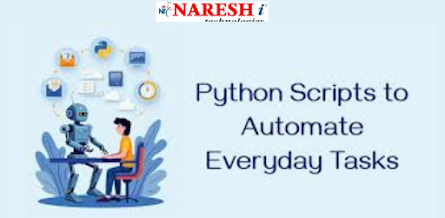Automating Everyday Tasks with Python Scripts
.png)
In the fast-paced digital world, time is a precious resource. Whether you’re a working professional, student, or entrepreneur, finding ways to streamline daily activities can make a big difference. This is where Python, a versatile and beginner-friendly programming language, shines—especially when paired with practical training like a Full Stack Python Training program. Automating routine tasks not only saves time but also boosts productivity and accuracy. Why Use Python for Automation? Python is known for its clean syntax and vast library support. From sending emails and renaming files to scraping web data and automating spreadsheets, Python makes it easy for anyone to automate repetitive tasks. It’s not just about knowing the language—it’s about learning how to apply it effectively. That’s why many developers turn to structured learning paths such as Full Stack Python Training , which covers front-end, back-end, and automation skills all in one curriculum. Everyday Tasks Yo...
.png)
.png)

.png)

.jpg)